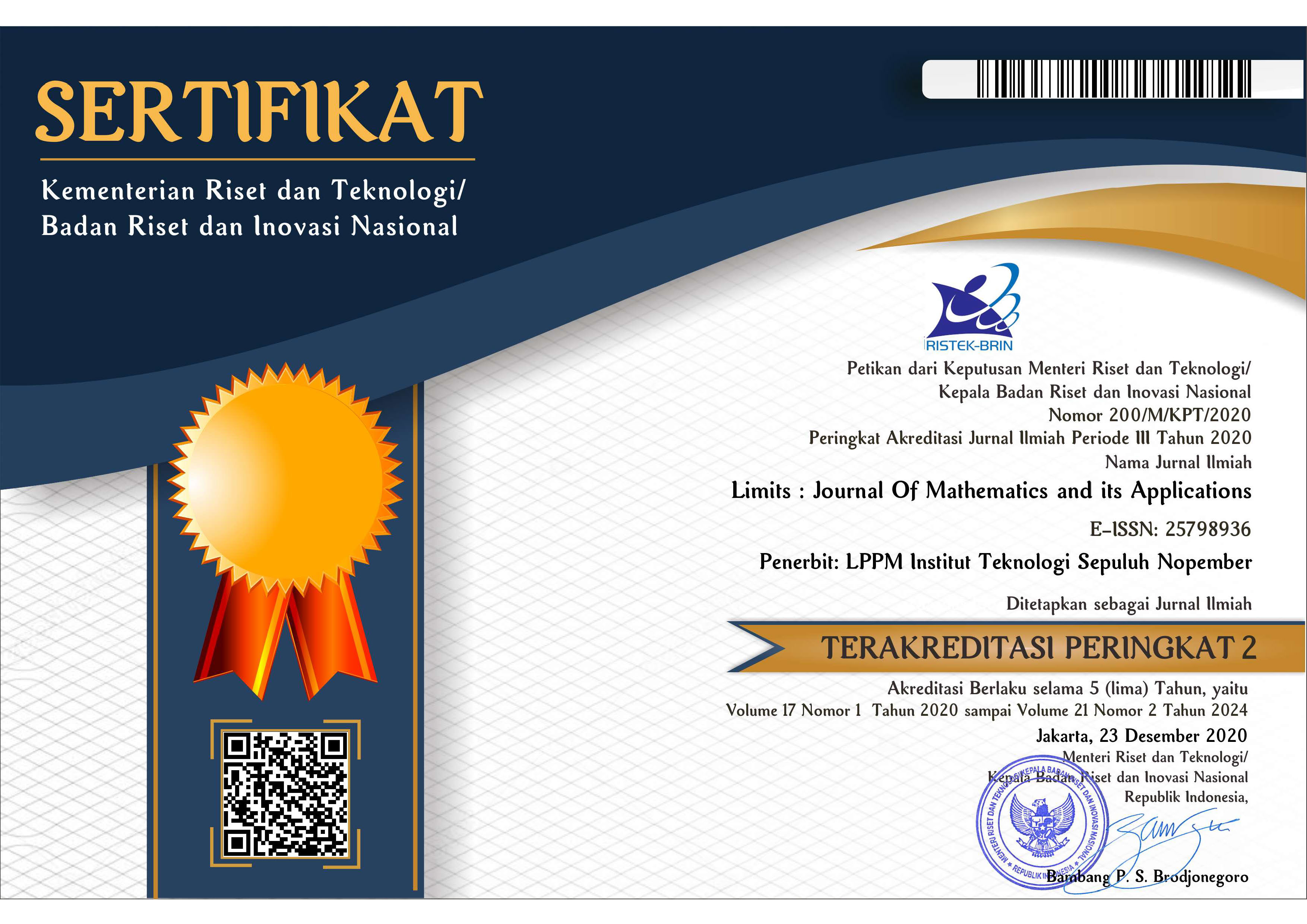Pemodelan Premi Asuransi Bencana Kematian pada Ternak Sapi dengan Pengaruh Fatal Shock
Abstract
Cattle farming is one of the highest demands of occupation by Indonesians as the source of income. If in a farm there are cattle with an infectious disease, thus it will cause them sick or even die, hence the infected cattle cannot provide maximum benefits. As a result, the farmer's income will decrease or incurred losses. Therefore, cattle insurance become one preventive way to divert the risk of financial losses incurred by cattle breeders. The expectation of losses is determined by the effect of fatal shock, namely the arrival time of the Brucellosis disease which follows a Poisson process. The distribution of loss amounts occurs as a mixture distribution of the binomial and degenerate distribution from a random variables of remaining cattle's future lifetime with influence of fatal shock, which is then modeled by determining the loss distribution incurred by the insurance company as a modification of the insurance policy with deductible, policy limit, and co-insurance. Insurance premium is obtained using the Pure Premium Method which uses the expectation of losses. Based on the calculation that used cattle population data in Bogor Regency, the premium rate increases as the policy limits, rate of Brucellosis disease arrival time, number of cattles insured, and cattle’s age increase. However, the premium rate will decrease if the deductible increases.
Keywords
Full Text:
PDFReferences
Dahiri and R. Wardianingsih, “Review Asuransi Usaha Ternak Sapi,” Bul. APBN, vol. IV, pp. 8–11, 2019.
Insyafiah and I. Wardhani, Kajian Persiapan Implementasi Asuransi Pertanian Secara Nasional. Kementerian Keuangan Badan Kebijakan Fiskal Pusat Pengelolaan Risiko Fiskal, 2014.
OJK, “Lokakarya Pembangunan Perikanan Budidaya Berkelanjutan: Udang dan Rumput Laut - Asuransi Usaha Tani Padi, Asuransi Usaha Ternak Sapi, Asuransi Perikanan Pembudidaya Ikan Kecil, Asuransi Nelayan,” 2019. https://wri-indonesia.org/id/events/lokakarya-pembangunan-perikanan-budidaya-berkelanjutan-udang-dan-rumput-laut (accessed Nov. 17, 2020).
J. Pai and N. Ravishanker, “Livestock mortality catastrophe insurance using fatal shock process,” Insur. Math. Econ., vol. 90, pp. 58–65, 2020, doi: 10.1016/j.insmatheco.2019.11.001.
M. Z. Khan and M. Zahoor, “An overview of brucellosis in cattle and humans, and its serological and molecular diagnosis in control strategies,” Trop. Med. Infect. Dis., vol. 3, no. 2, 2018, doi: 10.3390/tropicalmed3020065.
C. Basri and B. Sumiarto, “Taksiran Kerugian Ekonomi Penyakit Kluron Menular (Brucellosis) pada Populasi Ternak di Indonesia,” J. Vet., vol. 18, no. 4, pp. 547–556, 2017, doi: 10.19087/jveteriner.2017.18.4.547.
S. Anastasiadis and S. Chukova, “Multivariate insurance models: An overview,” Insur. Math. Econ., vol. 51, no. 1, pp. 222–227, 2012, doi: 10.1016/j.insmatheco.2011.01.013.
J. LeMaire, N. Bowers, H. Gerber, J. Hickman, D. Jones, and C. Nesbitt, Actuarial Mathematics, vol. 57, no. 2. THE SOCIETY OF ACTUARIES, 1997.
G. Werner et al., Basic Ratemaking, 5th ed., no. October. USA: Casualty Actuarial Society, 2016.
R. L. Brown and L. R. Gottlieb, Introduction to ratemaking and loss reserving for property and casualty insurance, 3rd ed. USA: ACTEX Publications, 2001.
DOI: http://dx.doi.org/10.12962%2Flimits.v19i2.9027
Refbacks
- There are currently no refbacks.
Jumlah Kunjungan:

Limits: Journal Mathematics and its Aplications by Pusat Publikasi Ilmiah LPPM Institut Teknologi Sepuluh Nopember is licensed under a Creative Commons Attribution-ShareAlike 4.0 International License.
Based on a work at https://iptek.its.ac.id/index.php/limits.






